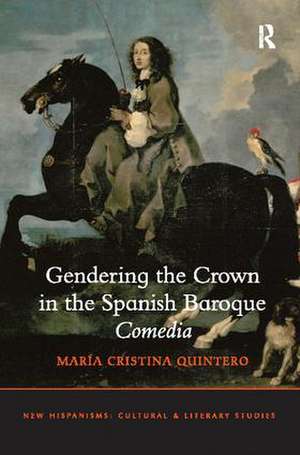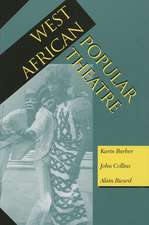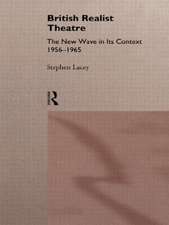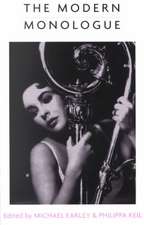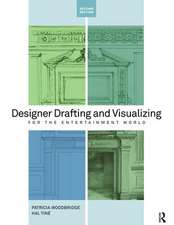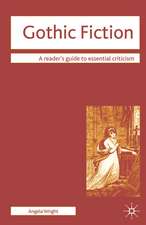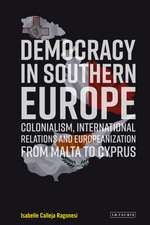Gendering the Crown in the Spanish Baroque Comedia: New Hispanisms: Cultural and Literary Studies
Autor María Cristina Quinteroen Limba Engleză Paperback – 22 mai 2017
| Toate formatele și edițiile | Preț | Express |
|---|---|---|
| Paperback (1) | 416.22 lei 6-8 săpt. | |
| Taylor & Francis – 22 mai 2017 | 416.22 lei 6-8 săpt. | |
| Hardback (1) | 1112.34 lei 6-8 săpt. | |
| Taylor & Francis – 28 iun 2012 | 1112.34 lei 6-8 săpt. |
Preț: 416.22 lei
Nou
Puncte Express: 624
Preț estimativ în valută:
79.65€ • 86.49$ • 66.91£
79.65€ • 86.49$ • 66.91£
Carte tipărită la comandă
Livrare economică 22 aprilie-06 mai
Preluare comenzi: 021 569.72.76
Specificații
ISBN-13: 9781138109995
ISBN-10: 1138109991
Pagini: 264
Dimensiuni: 156 x 234 x 14 mm
Greutate: 0.45 kg
Ediția:1
Editura: Taylor & Francis
Colecția Routledge
Seria New Hispanisms: Cultural and Literary Studies
Locul publicării:Oxford, United Kingdom
ISBN-10: 1138109991
Pagini: 264
Dimensiuni: 156 x 234 x 14 mm
Greutate: 0.45 kg
Ediția:1
Editura: Taylor & Francis
Colecția Routledge
Seria New Hispanisms: Cultural and Literary Studies
Locul publicării:Oxford, United Kingdom
Notă biografică
Maria Cristina Quintero is Professor of Spanish and Director of the Comparative Literature Program at Bryn Mawr College, USA.
Recenzii
'Here is a provocative analysis seasoned with lots of historical and contextual information, a valuable addition to the literature on golden age comedia. Summing Up: Highly recommended. Upper-division undergraduates and above.' Choice 'Quintero's gives us an astute study of staged representations of women in power in a dozen key Baroque comedias, brilliantly juxtaposing the flow of desire transmitted by performance to the theatrical law that encloses them in subordinate positions. Her fine-grained and theoretically informed analysis contextualizes them historically within a seventeenth-century climate of crisis for masculinity and anxiety over monarchical succession.' Margaret R. Greer, Duke University '... the book raises fascinating questions about queenly rule and its representation on stage in Baroque Spain, making a valuable contribution to our understanding of the many currents that influence theatrical performance of the period.' Bulletin of the Comediantes ’...female figures, while ostensibly bound to theatrical convention and patriarchal bias, leave a lasting contribution in their own right, at the very least a more fluid and ambiguous vision of gender and power, and perhaps even more than that, a means of interrogating the very structures by which women are contained. In doing so [Quintero] gives us further expert evidence of the Comedia’s sophisticated, self-conscious, and potentially critical relationship with the political system, and new insight into the compelling nature of a feminine power that is negated yet never wholly eradicated.’ Bulletin of Spanish Studies 'MarÃa Cristina Quintero makes a most welcome contribution to scholarship on the representation of monarchy in early modern Spanish theater. While several books have focused on kings, Quintero concentrates on queens-strikingly present in the comedia, if often overlooked by critics. Gender, Quintero forcefully argues, was at the crux of explorations of monarchical power on the s
Cuprins
Introduction; Chapter 1 Women and Drama in Early Modern Spain; Chapter 2 Beauty and the Machiavellian Beast; Chapter 3 1Portions of this chapter appeared in a special volume commemorating the 400th anniversary of Calderón’s birth. See Quintero, “Gender, Tyranny, and the Performance of Power in Calderón’s La hija del aire,” Bulletin of the comediantes 53.1 (): 155–78; Chapter 4 English Queens and the Body Politic; Chapter 5 Christina of Sweden and Queenly Garb(o); epilogue Epilogue;
Descriere
Taking into account theories of gender, performance and performativity within a historical context, this study explores how the Baroque comedia's preoccupation with kingship goes hand in hand with the obsessive representation of women (and women's bodies). The question of royal subjectivity in plays dealing with fantasies of feminine rule-by Calderón de la Barca, Tirso de Molina and others-is rendered inseparable from issues surrounding masculinity and femininity.
